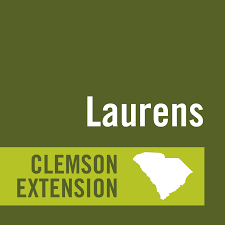October Yard and Garden Tips
October 12, 2023by Clemson Extension Laurens Office
Watch out for:
Lawns
- White grubs – the bacteria Bacillus thuringiensis does a nice job on Japanese Beetle grubs, but it does take a little time to build up in the soil. Bacillus thuringiensis does not, however, control other types of grubs. If you have an area that looks like something has been digging there, you probably have grubs, with some form of wildlife digging them up for a snack. See White Grub Management in Turfgrass for more information.
Things to do:
Flowers
- Bulbs – it’s time to plant those spring-flowering bulbs you purchased in September, such as daffodils, tulips, hyacinths, and crocus. See Spring-Flowering Bulbs for more information.
- Soil Test – now is the time to test the soil in your planned beds for plant nutrients. Soil tests usually take 10 days, so test now to have the results when you plant bulbs and beds. It is important to till in the lime needed (if any) for faster soil pH adjustment. You may also sample your vegetable garden now if you do not plan to add more fertilizer for late crops. See How to Collect a Soil Sample for information on sampling your areas.
Fruits
- Fruit sanitation – begin inspecting your fruit trees. Be sure to remove any mummified remaining fruits, and rake up and dispose of old leaves and branches that may harbor diseases over the winter.
Lawns
- Fertilizer – You may choose to add some nitrogen to zoysia and Bermuda lawns this month that have been overseeded. DON’T fertilize non-overseeded, warm-season grass lawns late in the fall! See Fertilizing Lawns for more information. If you have not soil-tested your lawn areas in the past 12 months, now is a great time!
- Lawn Establishment – if you plan to plant a cool-season (fescue) lawn, the best time to plant is between September 15 and October 15. Wait until next spring for warm-season grasses. Unhulled Bermuda seed (Bermuda seed with the hulls still on the seed) can be planted now, but spring planting of hulled seed will provide a better stand. See Lawn Establishment for more information.
- Henbit – this nice little lawn weed can be a problem. Treat now to prevent its return this summer. See Henbit for more information.
- Nutsedge or “nutgrass” – nutsedge is very difficult to control. There are two main types in our area – purple and yellow. You must identify which you have before you begin treatment. Herbicides must be applied when the nutsedge is actively growing, which means decent soil moisture and warm conditions. See Nutsedge for more information.
- Irrigation – as this month progresses you will continue to cut back on your irrigation amounts. See the Home and Garden Center’s irrigation publications for more information. See How Much Water to determine how much water you are actually applying.
Ponds
- Pond Stocking – September through January are good months to stock bream in a fishing pond. See Stocking & Harvesting Recreational Fish Ponds for more information.
- Pond Liming – September through January are also good times to lime the pond bottom if necessary. See Liming Recreational Ponds for information on sampling the bottom and applying lime if needed.
Trees
- Leaves – leaves are beginning to fall. If you have space and a little time composting is a great option; if not, you can also till them into any fallow beds you have or the vegetable garden. See Composting for more information.
- Plan ahead – if you plan to plant some trees or shrubs this year, begin thinking about which plants you would like now, and find retailers that carry those varieties. You have plenty of time, but you certainly do not want to miss your favorite at the last minute.
Vegetables
- Garden clean-up – half the tomato disease battle in a vegetable garden is sanitation. As tomatoes end their production remove them from the garden and take them to a landfill. Many diseases will over-winter on old infected leaves and stems. (A good practice for any plants you have had disease problems with this year).
- Make a note – sketch out where you planted various vegetables in your garden. This will come in handy next spring when you plant, so you can rotate your crops to help prevent disease.
All pamphlets referenced in this calendar may be found online: http://www.clemson.edu/hgic or http://www.clemson.edu/cafls/departments/esps/factsheets/.
The Clemson University Cooperative Extension Service offers its programs to people of all ages, regardless of race, color, gender, religion, national origin, disability, political beliefs, sexual orientation, gender identity, marital or family status and is an equal opportunity employer.



















